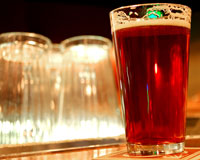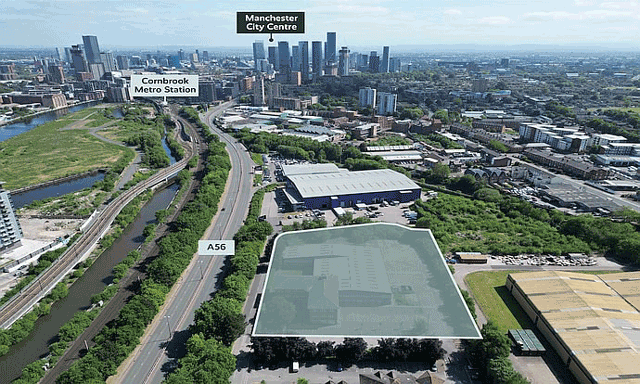Is the British boozer really dead? For those who follow the UK pub sector, there have been two seemingly incontrovertible facts about the UK pub market in recent years.
The first is that pubs have been closing at a shocking rate. At its worst, this was 52 pubs per week nationally in 2009, according to Camra/CGA Strategy figures. It has fallen to 28 per week at the last count this year, but the message seems clear: the market still thinks we have too many pubs.
The second accepted truth about this storm of closures is that those pubs that have sidestepped failure are those putting more emphasis on food. The street-corner drinking den has looked for some years like a beaten boxer, while the gastropub has been flouncing around with all the nose-in-the-air chutzpah of the new king of the sector. This is one reason investors are very keen on food-led pubs (see panel).
But overall, is there any prospect of new pubs opening in the next couple of years? Or is it just a matter of a stemming the closure rate?
John Kinsey, director at JLL, is one of many who believes that although the closure rate has slowed “there are pubs in the market that still need to be taken out”. Charlotte Wild, pubs specialist at Davis Coffer Lyons, agrees, saying: “Some pubs just aren’t viable.” But Kinsey also says investment and reinvention can transform the fortunes of pub sites.
Kevin Marsh, director and head of licensed leisure at Savills, believes there is “definitely a little more positive feeling” in the sector, but adds that the trend of recent years for companies with a mix of managed and tenanted pubs to increase their managed estate, while selling off tenanted property, is likely to continue.
House building opportunities
There also may be some new pub openings on the back of house building.
Marsh says: “There is a considerable amount of house building going on and where there are sites of several hundred units, local authorities insist on community amenities. These are likely to include a pub.”
For those who have regretted the passing of the boozer, the better news is that while nobody is expecting new drinks-led pubs to start opening in droves, the end of their decline could be in sight.
Certainly this is the view of Simon Johnson, head of advisory – specialist markets, at CBRE. Johnson believes that despite – or perhaps because of – the thousands of closures of recent years, the drinking pubs that remain are much more likely to be commercially viable.
In recent years there have been many pubs sold and converted to alternative uses as the market adjusted to less demand. Johnson believes there will continue to be pub sales, but with the important difference that they will be sold to continue to operate as pubs: sold on rather than sold off.
He says: “We estimate that up to 2,000 wet-led pubs will change hands in the next couple of years. They will be mostly in large groups for existing use, as shown by Greene King’s sale of 275 pubs to Hawthorn Leisure, rather than individual sales for alternative use.”
The Hawthorn Leisure deal was notable, says Johnson, because the pubs sold were not at all dilapidated. In fact, Greene King had kept them all in good condition, which is one of the reasons Hawthorn went for the deal.
But the nature of the modern market means that Hawthorn intends to invest even more. This is also a trend we can expect to see more of, Johnson adds.
To understand why, Johnson suggests you ask yourself this question: why was the British pub so popular for most of the 20th century? It was because pubs were nicer than people’s houses. Then houses became nicer, so people stayed at home more. How do you persuade people to come back? Make pubs offer something that home might not.
In some cases this is clearly happening, both in niche sectors such as pubs specialising in craft beer and in the more widespread investment in managed houses as opposed to tenanted pubs. Many agents point to the way big companies such as Greene King and Marston’s have put many more of their eggs in the managed basket as opposed to the tenanted one.
If you were looking for new pubs opening, for example, then Marston’s new-build food houses would be a good starting point, suggests Simon Hall, Fleurets’ head of pubs.
But Marston’s figures are revealing. In its latest interim report, for the 26 weeks ending 15 April this year, it did indeed highlight that it is on target to open 27 new pubs this year, but it added that in the six-month period covered by the figures it sold 286 wet-led pubs. Marston’s wants a smaller estate in terms of numbers of pubs. Fewer pubs, but better pubs, which seems to reflect the picture, even if the pubs Marston’s sells might very well prosper under new ownership.
Continued decline
Nationally, Hall says: “The total number of pubs will continue to decline. Every one of these super new operations that takes over £30,000 per week will affect perhaps 20 other inferior pubs (and restaurants) in the locality and some will inevitably fall over the edge and close.”
Fleurets statistics for the past five years suggest that of those pubs that have closed, half have reopened again as pubs and half were redeveloped.
The change in 2014 may well be that the pubs that are sold and are kept as pubs will be in the majority and that complete closure will be less frequent. The British pub may have been on the floor, but it seems to be getting to its ?feet again.
The investment view
For investors, the UK pub sector looks like a better profit opportunity than at any time in the past quarter-century, say analysts.
But from the viewpoint of many investors, that potential profit is based on food as well as well as alcohol.
Deutsche Bank’s sector research team, led by Geoff Colyer, is among those encouraging investors to consider investing in the pub companies, but it now places them firmly in the broader “total eating- and drinking-out context”.
In its latest report, released in April, DB says that although the past six years have seen some of the worst trading conditions for pubs since the second world war, they have emerged from the downturn fit for the recovery, both operationally and financially.
But DB estimates that more than 50% of most pubs groups’ earnings are now driven by those eating and drinking rather than just drinking.
For the major pub groups, this figure appears to be even higher, according to DB, at between 65% and 75% of total sales.
One of the results of all this change is that analysts are much more positive than at any time in recent years.
The DB report, The Chips are Up, said: “Having survived the smoking ban, above-inflation [increases in] excise beer duties and the recession, as well as a more conservative attitude towards leverage, the pub sector has emerged in much better shape, in our view, than at any stage in the past three decades.”











